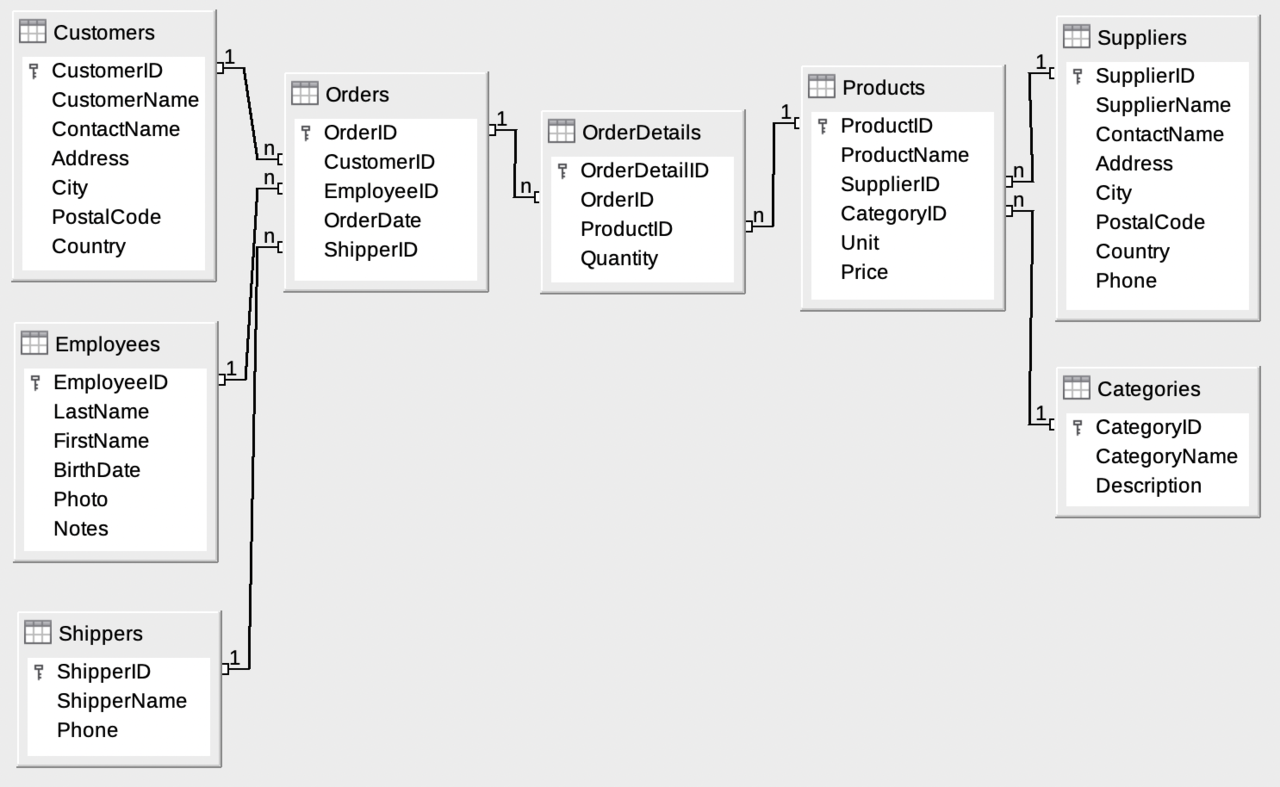Relational Databases
The relational model has a structural part (schemata with dependencies) and an operational part (relational algebra). The logical and physical levels are independent of each other. The only basic construct on the logical level is the relation; relations can be illustrated for the users in the form of tables.
|
|
||||||||||||||||||||||||||||||||||||||||||||||||||||||||||||||||||||||||||||||||||
What Can SQL (Structured Query Language) Do?
- SQL can execute queries against a database.
- SQL can retrieve data from a database.
- SQL can insert records in a database.
- SQL can update records in a database.
- SQL can delete records from a database.
- SQL can create new databases.
- SQL can create new tables in a database.
- SQL can create stored procedures in a database.
- SQL can create views in a database.
- SQL can set permissions on tables, procedures, and views.
Demonstration
Below is an SQL test area from W3Schools, which uses the well-known Northwind sample database. The tables here are for read only because of the problem of embedding the scripts. For a fully working example, check this by using Chrome.
|
Result:
|
The Database includes:
|

|
The Database includes:
|